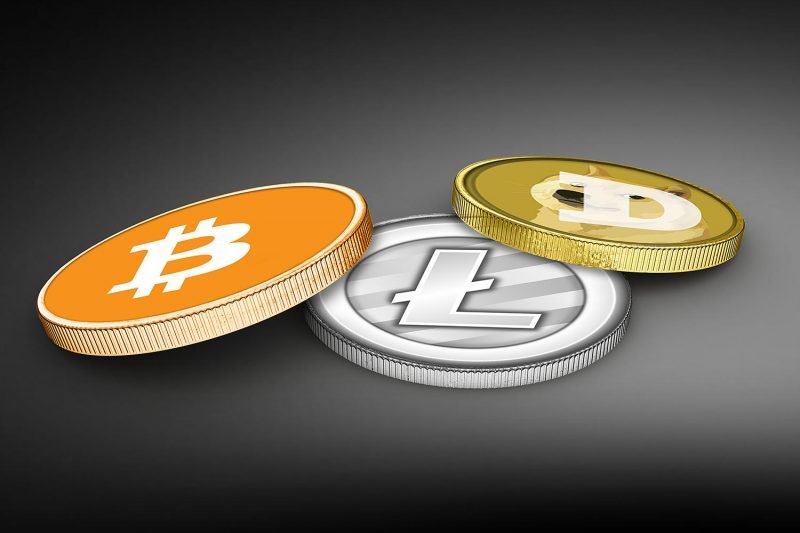What is Cryptocurrency
Since its inception, Bitcoin has become the world’s most used digital currency in history and isn’t showing signs of aging. Apart from Bitcoin, though, there are two more of these cryptocurrencies that lesser people know of. Called Litecoin and Dogecoin, these 2 are the alternatives to the original Bitcoin; the names arise from popular Internet memes. As a concept, Cryptocurrency has been there since the Internet became mainstream. It involves the decentralization of currency by enabling encrypted peer-to-peer transaction methods. This allows users on the Internet to transfer monetary funds in return for goods and services. All these transactions are covered under a protected firewall and are thus free of any regulations by the government. For keeping track of transactions, a public ledger called a blockchain is maintained. The users can access this blockchain to ensure that the transaction has proof of payment. The Process When a user sends across any amount of this digital currency, a private key is added to the data, a key accessible only by the sender. This way it creates a unique signature on the transaction. The sender can then convey this key to the receiver for him to accept the funds. After that comes the unique process of mining. Mining is a relatively newer term in digital currency and was made popular only after the Bitcoin boom. Mining is nothing but the placing of algorithms to place your personal key into the blockchain in a cryptographic manner so as to avoid contact with any third parties. A certain reward by both parties ensures that mining keeps cryptocurrency under a safety blanket.
Bitcoin vs. Litecoin vs. Dogecoin
What is Bitcoin?
For those who do not know about Bitcoin, it is by far the most used electronic currency – not related to or dependent on the currency of any nation or government. Bitcoin (BTC) is a digital currency first mentioned in a 2008 paper by Satoshi Nakamoto, who called it an ‘anonymous, peer-to-peer, electronic payments system’. What makes it volatile is that, unlike printed coins and bills, there is no regulatory entity to back it. For example, in many countries, bills are printed only up to a certain ratio of total exchangeable metal available in that country. In 2016, 1 Bitcoin was worth around $375 on the open market. As of 3rd March 2017, it crossed $1200. The total number of bitcoins in circulation exceeds 15 million. In June 2017 its price crossed $2800 and in dollar terms, the Bitcoin market capitalization crossed 47 billion.
What is Litecoin?
For those who do not know about Litecoin, it is yet another electronic currency – quite similar to what Bitcoin-based its origin on. Litecoin is a cryptocurrency currency launched in 2011 by Charles Lee, an MIT graduate and former software developer at Google. Litecoin is based upon the fundamentals of how the peer-to-peer system works on Bitcoin, but with improvements on the technical front. Litecoin has substantially reduced the time of transfer to 2.5 minutes from a rather long 10 minutes with BTC. Despite the improvements in technicalities, it is safe to say that the circulation of Litecoin hasn’t yet matched up to Bitcoin. Thus, Litecoin still remains mostly a beta peer-to-peer payment system that is the likeliest successor to Bitcoin, if it sees its end. In 2016 1 Litecoin was worth just around $3 on the open market but has high growth prospects in the upcoming few months. The total number of Litecoins in circulation exceeds 44 million. In dollar terms, the Litecoin market capitalization is near $136.5 million.
What is Dogecoin?
The youngest member of the lot, Dogecoin, was developed in 2013 as a progression to a funny meme on the Internet but has since then caught up as a serious payment system to make online transactions. The name comes from ‘Doge’, an Internet meme that combines pictures of a Shiba Inu dog with fragments of loose English over them. This meme has been popular on top content curating websites since 2013. Apart from the ironic usage, Dogecoin actually does offer quite a lot better features compared to its contemporaries. The transfer time is just under a minute, compared to 2.5 minutes on Litecoin and 10 minutes with BTC. Also, there is no limit on the production of Dogecoin, and it depends entirely on the supply created by developers. As of 2016, 4400 Dogecoins are worth $1 on the open market and has huge growth prospects with the demise of Bitcoin seeming imminent to some observers. The total number of Dogecoins in circulation exceeds 102 billion. In dollar terms, the Dogecoin market capitalization is near $27 million. The Hurdles Right now, some entities accept cryptocurrency as valid currency to trade their goods. The bad thing here is that according to a few reports, most of such entities are gambling points and illegal drug-selling entities. Some reputed institutions such as Wikileaks also accept bitcoins so that contributors can stay anonymous. There is no way any agency can track the sender unless the sender leaves a trail of similar-sounding origin addresses. There are few bitcoin exchanges that convert Bitcoins into real currency and a recent law has made such bitcoin exchanges accountable for registration and taxation. These three are not the only Blockchain-based cryptocurrencies. You also have Ethereum, BlackCoin, Coinye, Dash, Decred, DigitalNote, Gridcoin, Mastercoin, MazaCoin, Monero, Namecoin, Nxt, Peercoin, PotCoin, Ripple, Titcoin, Zerocoin, etc. The number of cryptocurrencies available is over 1000! CONCLUSION Cryptocurrency is a rather new mode of transaction, and the start hasn’t been good with payment usually going through for illegal activities over the Dark Net. Despite that, the application and usage seem like a great idea with no regulatory body to manage and control these payments. If managed easily and efficiently, BTC and other of these currencies could go on to replace all kinds of physical bills for the majority of the world.
